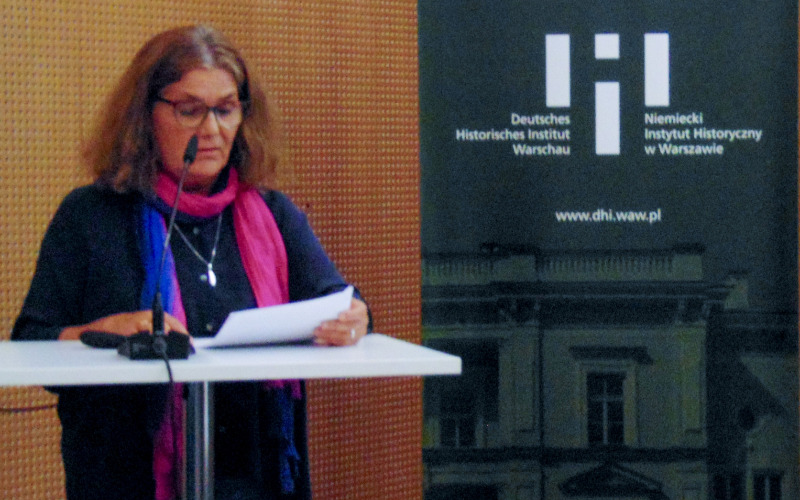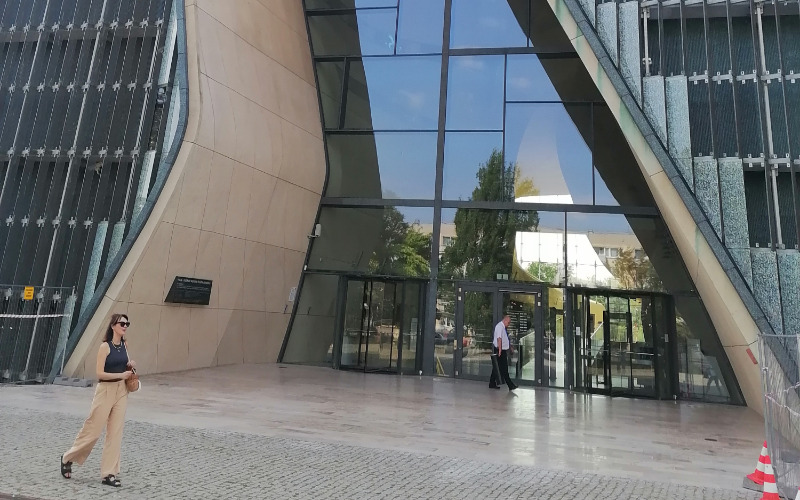The title of her lecture was: Approaches of the Scientific Community and Decision Makers to Hungarian Jewish Built Heritage after 1945. A Case Study of Two Orthodox Synagogues in Mád and Tállya.
In her lecture, Julia Csejdy elaborated on the different stories of the Mád and of the Tállya synagogues, both situated in the Northeastern part of Hungary, in the famous wine-producing region, Tokaj-Hegyalja. The synagogue of Tállya that was built in the 1850s and its precious Torah Ark suffered the fate of many Hungarian synagogues, it was dismantled in 1964. The Mád temple, one of the oldest and most beautiful synagogues, and the rabbi’s house were renovated in the 2000s. A broader context was also dealt with, namely the attitude of the various stakeholders – Jewish institutions, heritage experts and state administration – witnessed by the 20th century. The paper will be published by the conference organizers, the German Historical Institute Warsaw, the Polin Museum of Warsaw and the Technical University of Braunschweig. The lecturers came from all parts of East-Central Europe – eg. Poland, Czech Republic, Ukraine, Roumania, Croatia – and focused on the different aspects of restoring, managing, and revitalizing synagogues in the region. The Polin Museum, the Museum of the History of Polish Jews was an ideal venue for the conference. The building, designed by Finnish architect Rainer Mahlamaki, is an ingenious symbolic gesture well suited to the message of the core exhibition which focuses on the rich historical and cultural heritage of the Polish Jewry, instead of their tragic fate. The rather plain, geometrical volume opens up by the entrance which is like a fissure, and leads to the main hall with curved, dynamic walls with a large glazing opening onto the park. The exhibition realized on more than 4,000 square meters includes interactive installations, paintings, and oral histories among other features, and aims to pay tribute to those who perished in remembering how they lived.




